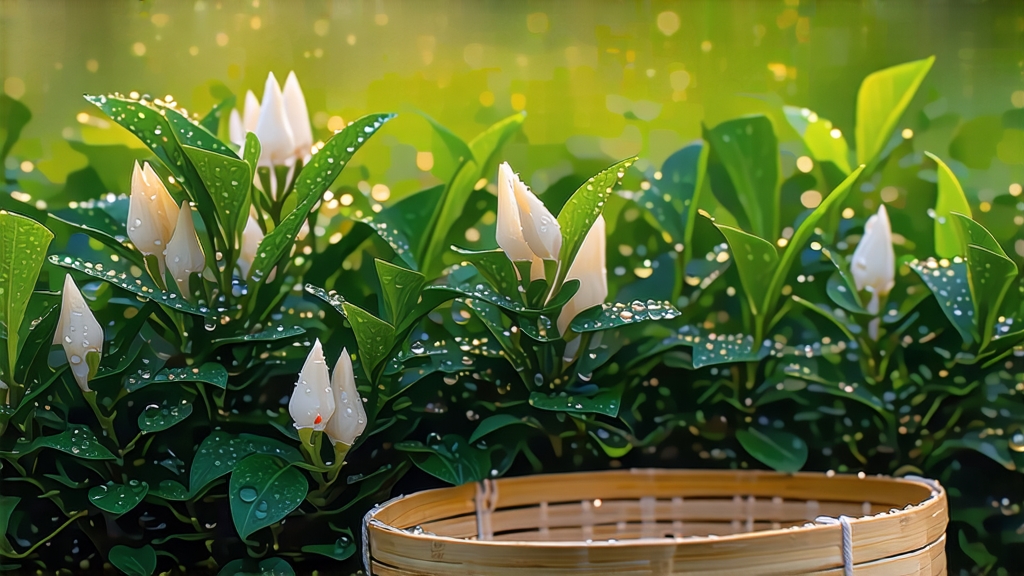
Among the six great families of Chinese tea, white tea is the quietest child, cherished for the way it whispers rather than shouts. Within that hushed household, Bai Hao Yin Zhen—“Silver Needle, White Down”—is the crown prince, a tea so refined that emperors once measured its worth against jade. To meet it is to step into a March morning in northern Fujian, when the hills of Fuding and Zhenghe float inside slow-moving clouds and every tea bush seems to be holding its breath.
History: from imperial tribute to global muse
Song dynasty records already praise “white down” picked at first light, but the name Bai Hao Yin Zhen appears in late-Ming local gazettes, describing buds presented at court “as straight as millet stalks, covered in hoarfrost.” When the last emperor fell in 1911, the tribute system vanished; yet the fame of Silver Needle endured, quietly carried overseas by Fuding merchants who traded it for medicine and saffron in Southeast Asia. In 1891 a small chest reached the London docks, where Victorian blenders christened it “Pekoe Tips,” mis-reading the Amoy dialect pronunciation of “white down.” A century later it would become the darling of specialty cafés from Melbourne to Montreal, celebrated for its low caffeine and high antioxidants.
Micro-terroir: two counties, two personalities
Authentic Silver Needle is made only from the unopened bud of the Da Bai (Big White) cultivar. Fuding, on the coast, gives buds that are plumper, silver-white, with a mango-like sweetness; Zhenghe, inland and 300 m higher, yields slightly slimmer, grey-green buds famous for orchid fragrance and a longer, mineral finish. Purists cup them side by side the way Burgundy lovers compare Volnay and Pommard.
Plucking: the silent lottery
The rules are ruthless: buds must be taken before the Qingming festival, usually between 15 March and 5 April, when the morning dew is still cool. No leaf, no stem, no insect bite. A skilled plucker fills only 200 g in an hour; 30 000 buds—an entire day’s work for five people—make one finished kilo. The buds are laid in shallow bamboo baskets lined with hemp cloth so that the tiny hairs remain intact; those hairs, or “hao,” carry the volatile aromatics that later drift into the cup.
Withering: where time and air fall in love
White tea’s soul lies in withering, not in pan-firing or rolling. The buds are spread one layer thick on reed trays set inside sun-warmed corridors whose windows are opened or closed according to humidity readings taken every thirty minutes. For 36 to 48 hours the buds lose moisture slowly, while enzymatic oxidation is allowed to tick forward just 5–10 %, enough to round the edges but preserve a green heart. In Fuding, traditional producers still move the trays to catch the setting sun, then back indoors to ride the cool night air; this diurnal rhythm coaxes out notes of honeydew and fresh cream. Modern climate-controlled tunnels can finish the job in 24 hours, but connoisseurs swear the old way gives a livelier “returning sweetness,” or huigan.
Firing: a kiss of charcoal, a breath of pine
When the buds feel like suede and smell like warm rice, they receive a final gentle bake: 30 minutes at 40 °C over charcoal made from local lychee wood. No flames touch the tea; the buds rest on wire mesh 60 cm above the embers, absorbing just enough infrared heat to drop residual moisture to 5 %. The classic sign of mastery is the sound: when tossed in a porcelain cup, properly finished Silver Needle should tinkle like tiny coins.
Grading and ageing: the white that turns to gold
Unlike green tea, Silver Needle is willing to grow old. Cakes and tins from the 1990s now fetch auction prices higher than raw Pu-er of similar vintage. Over years the chlorophyll breaks down, the amino acids polymerise, and the liquor darkens from pale apricot to deep amber, developing flavours of dried longan, sandalwood and even a hint of camphor. Aficionados store it in clay jars wrapped with rice paper, opening once a year to let the tea “breathe.”
Water philosophy: